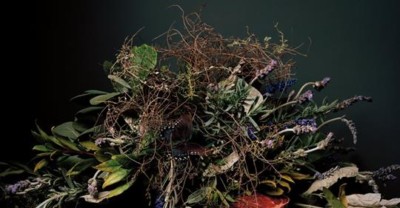Wonderful article from the NY Times By Ligaya Misha Nov. 21, 2018
 ONCE, HERBS WERE weapons. Five thousand years ago, the Sumerians recorded, in cuneiform, lifesaving prescriptions of myrtle and thyme. The oldest surviving text of Chinese herbal pharmacology, extolling the benefits of ginseng, camphor and cannabis, was set down in the first century A.D. Around the same time, the Greek physician Dioscorides documented the properties of herbs he encountered as a surgeon with Nero’s imperial Roman army; Western doctors consulted his compendium, “De Materia Medica,” for the next 1,500 years. In Renaissance England, chamomile, hyssop, pennyroyal and tansy were strewn on floors to ward off the plague; men and women wielded prophylactic posies of flowers and herbs like swords.
ONCE, HERBS WERE weapons. Five thousand years ago, the Sumerians recorded, in cuneiform, lifesaving prescriptions of myrtle and thyme. The oldest surviving text of Chinese herbal pharmacology, extolling the benefits of ginseng, camphor and cannabis, was set down in the first century A.D. Around the same time, the Greek physician Dioscorides documented the properties of herbs he encountered as a surgeon with Nero’s imperial Roman army; Western doctors consulted his compendium, “De Materia Medica,” for the next 1,500 years. In Renaissance England, chamomile, hyssop, pennyroyal and tansy were strewn on floors to ward off the plague; men and women wielded prophylactic posies of flowers and herbs like swords.
But with the triumphs of science and technology in the 19th century, herbs receded in significance. “These ancestral leaves, these immemorial attendants of man, these servants of his magic and healers of his pain,” as the American naturalist Henry Beston described them in 1935, became workhorses, steadfast and drained of alchemy. They came to be defined by that most prosaic of qualities: usefulness. Even in the kitchen, they were underlings, essential but largely confined to a supporting role. Any prettiness they possessed was incidental to their practical purpose and noted only in passing, en route to the boiling pot.
As the modern world has lost its luster, however, herbs are coming into ascendance once more, reasserting their curative powers and claiming a beauty of their own. A private herb garden has become a status symbol, as chefs flaunt seasonings that have fallen out of favor or are hard to find, like salad burnet, its bite as cleansing as a cucumber’s, or sculpit, which evokes a bashful tarragon. This goes beyond the now mainstream farm-to-table movement, which has roots in the counterculture of the 1960s, to what the Spanish chef Rodrigo de la Calle christened gastrobotánica: the restoration of forgotten plants to the realm of cooking. The British horticulturalist Jekka McVicar, who grows more than 650 varieties of herbs on her farm in South Gloucestershire, England, has been approached by British chefs seeking sweet woodruff, beloved in Germany as an infuser of Jell-O and beer, and baldmoney from the Scottish highlands, its flavor a sidestep from cumin. Farm.One, an underground hydroponic facility in downtown Manhattan, supplies avant-garde restaurants and pizzerias with rarities such as tiny, bright pluto basil and akatade, a Japanese water pepper that imparts a faintly anesthetic heat.
